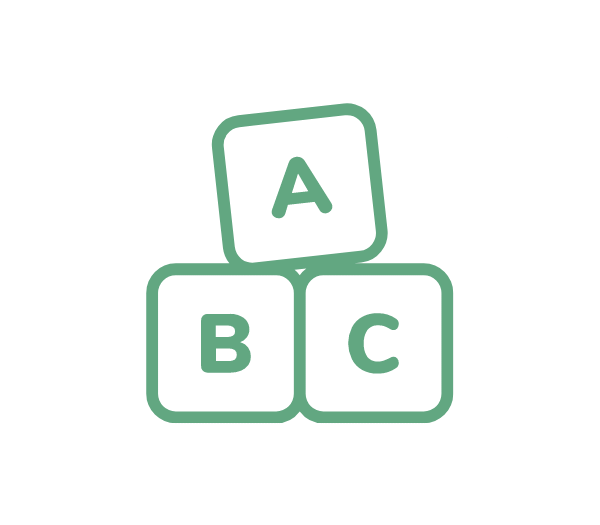
Toy and play information
Children aged
9 to 12 months
At this age your baby is exploring, interacting and imitating.

Play ideas
Play with household items and play with boxes and paper
How does it help the baby?
Helping my baby learn through exploring daily items
Tips:
- Developing pretend play
- Imitating parents and siblings
- Using two hands together to explore objects of different shapes and sizes
- Solving problems during play
Scroll down to read more.
Building blocks and stacking cups shape sorters insert puzzles cups and spoons
How does it help the baby?
Helping my baby use their hands to learn
Tips:
- Using two hands
- Working on grasp and release
- Pulling things apart and pushing them back together
- Understanding shapes
- Understanding new concepts –
- Building and putting things on top
- Putting objects into containers
- How things fit together
Scroll down to read more.
Pop up toys
How does it help the baby?
Helping my baby learn by doing
Tips:
- Pressing, turning, closing things
- Poking fingers in holes
- Beginning to understand cause and effect
Scroll down to read more.
Books
How does it help the baby?
Helping my baby build their language
Tips:
- Pointing with index finger
- Pointing to what he or she wants
- Turning pages
- Building shared attention and concentration
- Imitating first words like “duck” and “ball”
Scroll down to read more.
Baby walkers
How does it help the baby?
Helping my baby getting ready to walk
Tips:
- Standing and taking steps with support
- If you use a baby walker, choose a push along walker rather than one your baby sits in
Read our advice on baby walkers
Scroll down to read more.
Did you know?
At this age babies can point and use gestures and sounds to communicate their wants and needs. Respond to your baby’s sounds to encourage two-way communication.
Tips and ideas
Building skills
Promote pulling to stand – Place a toy on an elevated surface, such as a couch; encourage your baby to pull up to stand.
Practice new gestures while playing – Practice together waving, clapping, pointing, shaking head for “yes” and “no”. These help with the ability to communicate, understand and respond to language.
Practice turn taking – Roll a ball back and forth. Read to you baby letting them take turns interacting with the pictures and/or turning the pages.
Things to remember
Swapping toys around – Move toys to different rooms. Hide different toys for periods of time, so when the toy appears again, your baby will feel as if this is a new toy. Promotes interest and attention.
Describe actions throughout the day – Tell your baby what’s happening and name object, such as “we’re going to the park” and “here is your milk”. Encourage your baby to respond even if it is not with words.
Social and emotional growth – Your baby will begin to use a series of interactive emotional signals or gestures to communicate.
Keep your baby safe
Prevent burns – Never leave items cooking on the stove unattended. Keep hot liquids out of the reach of children.
Avoid “sit-in” baby walkers – They may delay walking and can be dangerous. Some baby walkers may tip over causing your baby to fall out.
Continue to avoid screen time – When the TV is on in the room parents may talk less to their baby. Less talking means less learning. Babies at this age love talking and interacting with you.
Did you know?
As this age babies typically can become very anxious when they can’t see you. Talking to them when you are in another room can reassure them that you are there and coming back.
The advice on this page has been created by B. Hutchon and S. Powell, Royal Free London, together with Dr. A. Fernandez, Neonatologist San Jose Hospital, Chile.

